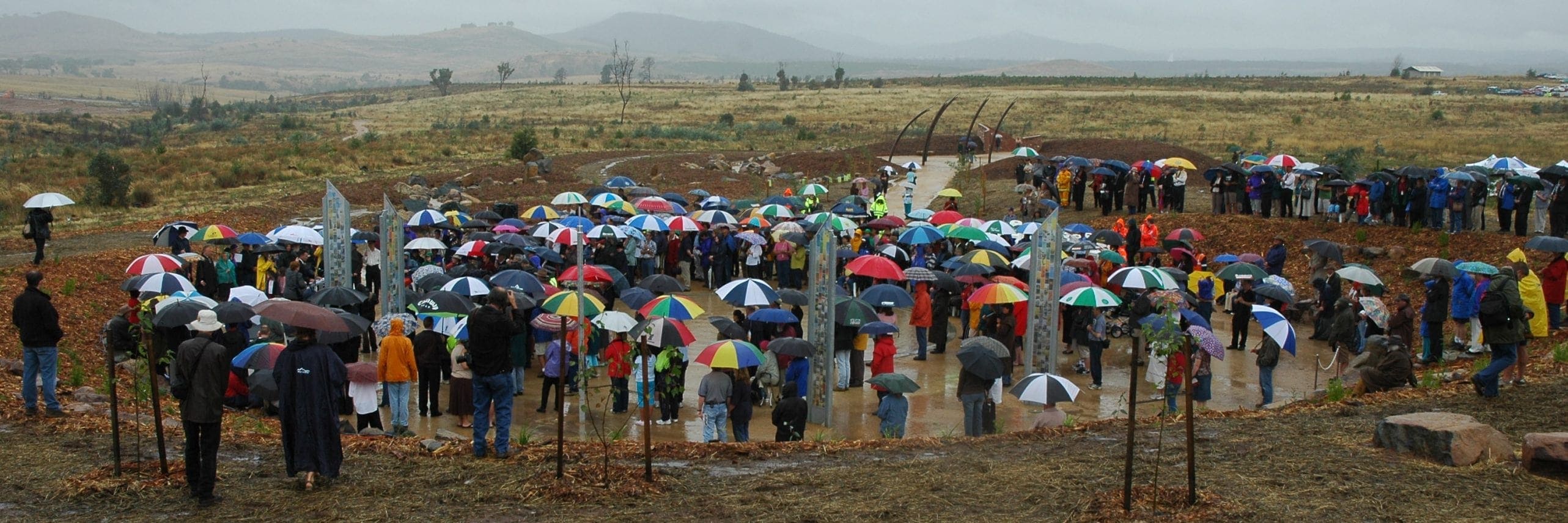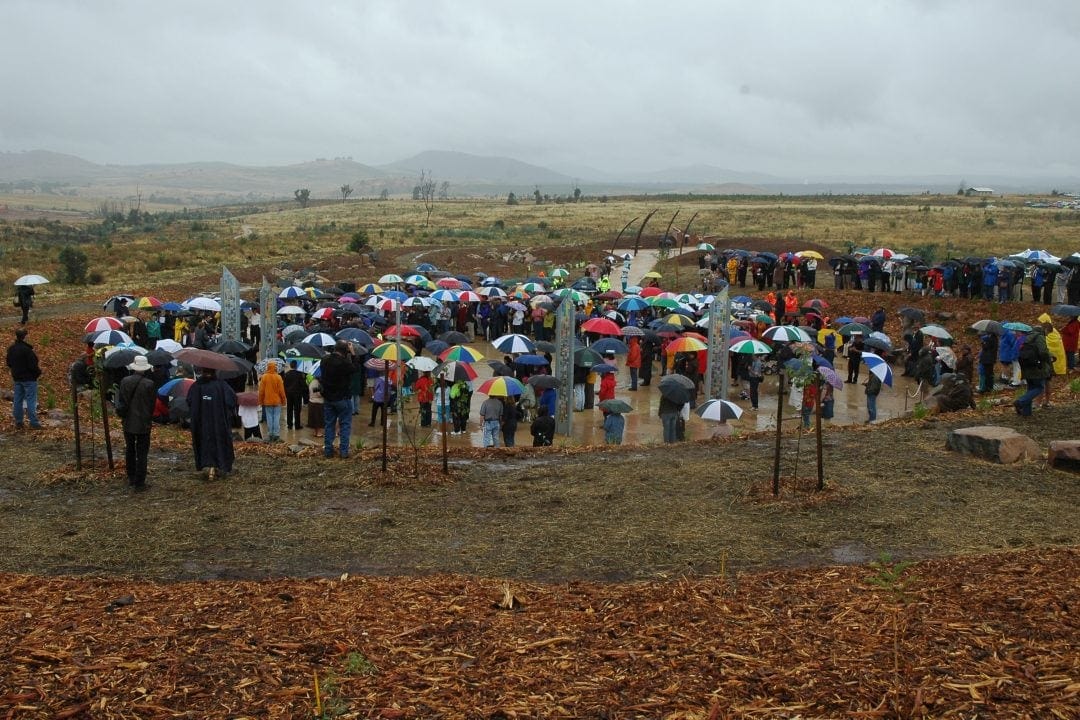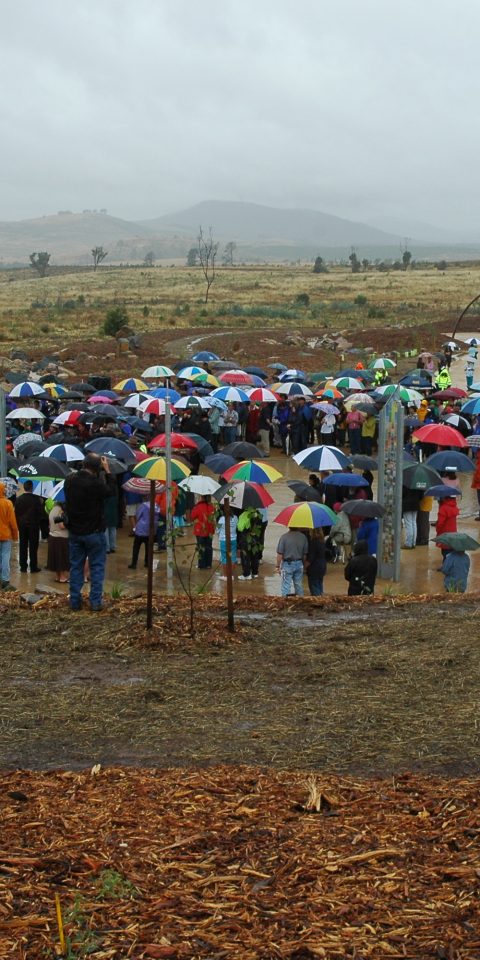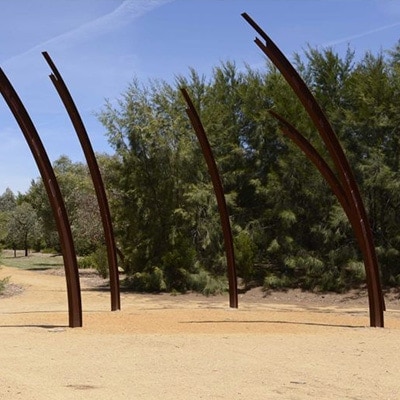


A Memorial that Remembers & Honours
A Memorial that Remembers & Honours
Posted in News by Mellita Bingley on Mon 01 Jul 2019.
A brief history of the ACT Bushfire Memorial
First published on stromloforestpark.com.au
The ACT Bushfire Memorial was commissioned by the ACT Government to acknowledge the impact of the 2003 bushfires, to mark the process of recovery, and to thank the many organisations and individuals who played crucial roles in the fire fighting and recovery efforts.
The Chief Minister and Minister for Arts, Heritage and Indigenous Affairs, Jon Stanhope dedicated the ACT Bushfire Memorial on Wednesday 18 January 2006, the third anniversary of the day the fires reached the national capital and its outlying settlements with such devastating effects.
The memorial is located in Stromlo Forest Park, near the intersection of Cotter Road and Eucumbene Drive, Weston. It has been designed by Canberra artists Tess Horwitz, Tony Steel and Martyn Jolly, with significant advice and input from the ACT community.
A BRIEF HISTORY OF THE ACT BUSHFIRE MEMORIAL:
On Saturday 18 January 2003, the bushfires which had been burning in the hills to the west and south-west of Canberra for more than a week reached the perimeter of the city. Four people lost their lives, nearly five hundred homes were destroyed, countless pets and other animals were killed, and there was widespread damage to rural properties, parks, forests, gardens and urban infrastructure.
Soon after the January 2003 bushfires, the ACT Government suggested that it would be appropriate to commission a bushfire memorial to acknowledge the impact of the fires, mark the process of recovery, and thank the many organisations and individuals who played crucial roles in the fire fighting and recovery efforts.
During an extensive community consultation, ACT residents were asked whether they wanted a memorial and, if so, what should the memorial convey and where should it be located.
The community endorsed the concept of the memorial, and indicated that the memorial should:
- be a simple natural and beautiful place which encourages a sense of peace and reflection;
- be inclusive and accessible to the whole community;
- be enduring and have the capacity to grow over time; and
- enable the community to participate by contributing objects with personal meaning.
The physical elements people wanted to see in the memorial were: trees; water; a place to sit; bricks and other contributions with personal meaning; and features which indicated the scope of the bushfires in some way.
People wanted the memorial to be located in a place that would tie in with restoration of the fire-affected areas; be accessible and visible; and include a hub which could provide a ceremonial focus.
Three local artists, Tess Horwitz, Tony Steel and Martyn Jolly, were commissioned to create the memorial in response to the community’s requests.
The artists, in conceiving the design, stated that: “Contributions by the community will form an integral part of the final memorial which will gain its ‘heart’ from community involvement and from the ongoing use of the setting.”
Over two weekends in April and May 2005, the artists invited people from the ACT region to provide contributions for the memorial. They received more than 500 images from 80 families and individuals and more than 160 people provided inscriptions to be used on bricks for the curved entry wall to the memorial.
The memorial takes us on a journey from the day of the fire, through the process of recovery, to the honouring of memory.
The entrance walls are constructed with the community’s salvaged and inscribed bricks which contain messages of grief and gratitude. Beyond the walls, a site framed by a grove of casuarinas contains red glass and metal forms that refer to the force of the firestorm and the lightning strikes that sparked the main fires.
Moving from the remembrance of the fires, an avenue leads to an amphitheatre enclosing a pond and bubbling spring. The glass columns bordering the pond contain details from photos provided by the community which speak of memory and human resilience.
The design of the surrounding landscape and the stream are an integral part of the memorial. Most of the plant species selected by the artists are native, many indigenous to this area. The selection was made taking into consideration the plants’ combined effect when they reach maturity, and the prevailing weather conditions at the memorial site.
The memorial is located in Stromlo Forest Park. Over time, people will be able to see the memorial settling into a park-like setting.
For more information about: A Memorial that Remembers & Honours
For more information about: A Memorial that Remembers & Honours, or any other event-related questions you might have please get in touch.

